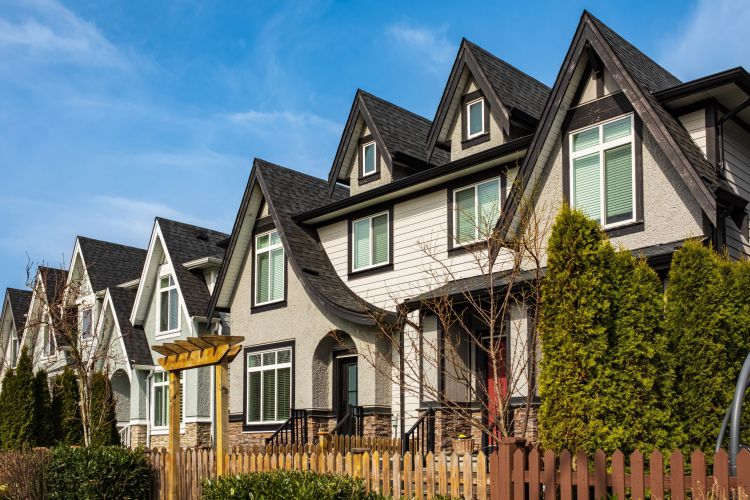 Key Takeaways
Key Takeaways
- Middle housing provides diverse, affordable options for growing communities.
- Implementing middle housing requires strategic zoning reforms and community engagement.
- Successful case studies demonstrate the feasibility and benefits of middle housing initiatives.
Table of Contents
- Understanding Middle Housing
- Benefits of Middle Housing
- Strategies for Implementation
- Conclusion
As urban populations continue to swell and migration patterns accelerate, cities across the nation face mounting pressure to provide more inclusive and adaptable housing solutions for contemporary lifestyles. Today’s families, professionals, and seniors have increasingly diverse needs that can’t be met by single-family homes or large-scale apartment buildings alone. As a result, options like duplexes for sale near me and other forms of “middle housing” have emerged as attractive paths forward for communities seeking both affordability and vitality. Middle housing enables thoughtful, incremental development that protects the character of existing neighborhoods, yet expands access to attainable and versatile dwellings for residents across the economic spectrum. Whether you are a young professional entering the workforce, a growing family seeking more space, or an older adult looking to downsize, middle housing offers adaptable solutions that foster diversity and vibrancy within every community. Middle housing alternatives—such as duplexes, triplexes, fourplexes, cottage courts, and townhomes—play a vital role in bridging the gap between costly detached homes and sprawling apartment complexes. By introducing these housing types to established neighborhoods, cities can support environmentally sustainable growth, more equitable land use, and genuine neighborhood diversity. With careful design and policy support, middle housing options offer a “missing middle” density that helps communities thrive without overwhelming existing infrastructure or altering the fabric of beloved local streetscapes.
Understanding Middle Housing
Middle housing refers to various housing types that offer more density and flexibility than traditional single-family homes, yet retain a more modest scale than larger multifamily developments. These include:
- Duplexes
- Triplexes
- Fourplexes
- Townhomes
- Cottage courts
- Courtyard apartments
Built to complement the proportion and appearance of existing neighborhoods, these “missing middle” housing types are readily integrated into walkable, transit-friendly areas. By offering a range of choices that fit seamlessly alongside detached homes, middle housing enables communities to provide greater flexibility for singles, young families, multigenerational households, and retirees alike. With architectural variety and thoughtful site design, these homes avoid the uniformity or bulk of large apartment complexes, preserving a human-scale streetscape while introducing new residential opportunities and vitality to the area.
Benefits of Middle Housing
Embracing middle housing brings an array of social, economic, and environmental advantages that help growing communities become more inclusive and resilient. Some of the most significant benefits include:
- Affordability: By sharing land and infrastructure costs among multiple households, middle housing creates options for first-time homebuyers, young professionals, renters, and older adults looking to downsize. Smaller units and shared amenities help keep prices within reach for a broader segment of the population.
- Diversity: A mix of housing options empowers singles, couples, families with children, and seniors to find homes that fit their lifestyles and incomes. This helps avoid homogeneous neighborhoods and encourages the richness of diverse age groups and backgrounds living side by side.
- Sustainability: Higher residential density supports the use of public transit, pedestrian paths, and bicycle infrastructure, reducing reliance on private vehicles and lowering greenhouse gas emissions. Middle housing also uses existing utility networks, curbing urban sprawl and preserving open spaces.
- Community Integration: Unlike massive apartment buildings, middle housing is thoughtfully designed to blend with nearby homes, often using similar materials, setbacks, and heights. This ensures new development fits comfortably within the neighborhood, all while welcoming new residents and enhancing local vitality.
Ultimately, middle housing supports walkable neighborhoods, vibrant local businesses, and a stronger sense of community, making it a crucial component of long-term urban health and success.
Strategies for Implementation
Successfully weaving middle housing into the fabric of established communities requires a holistic approach coordinated by local government leadership, urban planners, residents, and developers. Four primary strategies stand out:
- Zoning Reforms: Updating municipal zoning codes is perhaps the most essential step. Many cities have legacy zoning laws restricting all but single-family homes, making introducing smaller, multi-unit dwellings challenging. By relaxing these rules and allowing duplexes, triplexes, and townhomes in appropriate areas, communities can revitalize neighborhoods while maintaining social and architectural identity.
- Incentives: Policy-makers can stimulate the development of middle housing by offering targeted incentives, such as reduced permitting fees, tax credits, or streamlined approval processes for qualifying projects. These programs help offset the unique financial and logistical challenges faced by developers of modest, small-scale housing types.
- Community Engagement: Transparent communication with neighbors, business owners, and prospective residents is vital. Public forums, workshops, and listening sessions ensure that anxieties are addressed and that changes reflect the collective vision rather than top-down mandates. Community buy-in makes implementation smoother and more sustainable in the long run.
- Infrastructure Support: When introducing additional housing units, cities must invest in upgraded utilities, transit options, green spaces, and educational facilities to accommodate new residents and avoid overburdening existing resources.
Conclusion
Middle housing represents a vital pathway for communities eager to balance population growth with the enduring values of affordability, inclusivity, and quality of life. By harnessing smart zoning reform, leveraging successful policy examples, and ensuring regular engagement with residents, cities and towns can adapt to a changing future while maintaining their unique sense of place. Suppose you are considering middle housing for your community or wish to learn more about local options. In that case, you’ll find that thoughtful planning and commitment to inclusion create stronger, more resilient neighborhoods. As the need for flexible, diverse homes continues to grow, middle housing offers a forward-thinking, practical solution that supports vibrant communities for generations to come.











